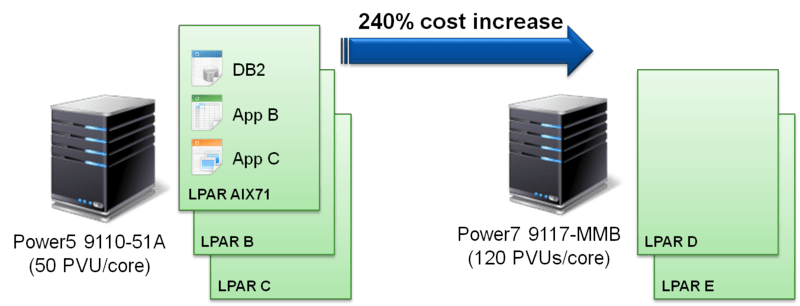The approach to license compliance consists of understanding the number of licenses consumed, by counting the number of software installations or metering application usage, and comparing these numbers to the current license entitlements owned or subscribed by an organization. This calculation must consider a number of parameters:
- The various license types: device, user, processor, server + CAL, etc.
- The licensing terms and conditions, including software product use rights, associated with each purchase, and
- The IT environment context in which the application is used or installed:
- Physical location
- Hardware properties of the virtual or physical host device
- Whether the application is locally installed or is accessed through an application virtualization technology
- Who owns the device accessing the application
This process can deliver amazing results enabling organizations to maintain license compliance, and in many instances optimize their licenses to realize substantial cost savings. One of the main limitations with this approach is that compliance issues will be only uncovered after the inventory or usage data is collected and reconciled with license entitlements. The risk is the chance that you may be audited before the issue is uncovered internally. Also, all organizations like to have visibility and understand the impact of changes before they are made, rather than being in a reactive mode. From this perspective, uncovering licensing issues before they occur by implementing a proactive license management process is one of the recommended software asset management best practices.
Changes impacting the license position, not only include installations of applications but also changes to the environment where applications are running. For instance, adding a processor to a server or moving a virtual machine across two physical hosts can significantly impact a license position. The example below shows the impact of moving an LPAR between two servers having different hardware characteristics:

Another basic example is found with Microsoft SQL Server Processor licenses where the software is running in virtual environments: the license position could be impacted if the hyper-threading of physical processors is turned on or off. Using workflow processes, organizations can limit the risk of drifting out of compliance. For instance, all new software installations or changes to an existing environment can be subjected to a workflow process that will include the license manager.
IT Asset Management
It all starts with knowing what’s in your IT ecosystem. Flexera One discovers even the most elusive assets whether on-prem, SaaS, cloud, containers and more.
Measuring the impact of a change within the datacenter is not an easy task. Many licenses such as the IBM Processor Value Unit (PVU), the Oracle Processor license, or Microsoft SQL Server processor licenses have complex calculation rules that include terms and conditions specific to virtual environments. Multiple changes may happen at the same time: reorganization of servers within the datacenter, virtualization of these servers or M&A activities, for instance, may involve reshuffling a set of applications, virtual machines or hardware partitions across many servers. When performing the impact analysis of any change, all installations and entitlements must be considered, since a different (more optimized) allocation of licenses may lower the license consumption. Calculations, such as the Oracle processor license, always require considering all software installations rather than an individual change.
The solution that has been requested by many license managers for a very long time is a ‘what-if’ analysis tool. This sort of tool would enable them to simulate various changes to their IT environment, such as new software installations, modifications to the properties of physical or virtual machines and processor pools, additions of new servers or virtual machines….and measure the impact on their license position. With this what-if analysis capability, organizations can proactively manage software licenses in dynamic IT environments to reduce cost and risk.
To learn more about what-if analysis, please visit our web site.







